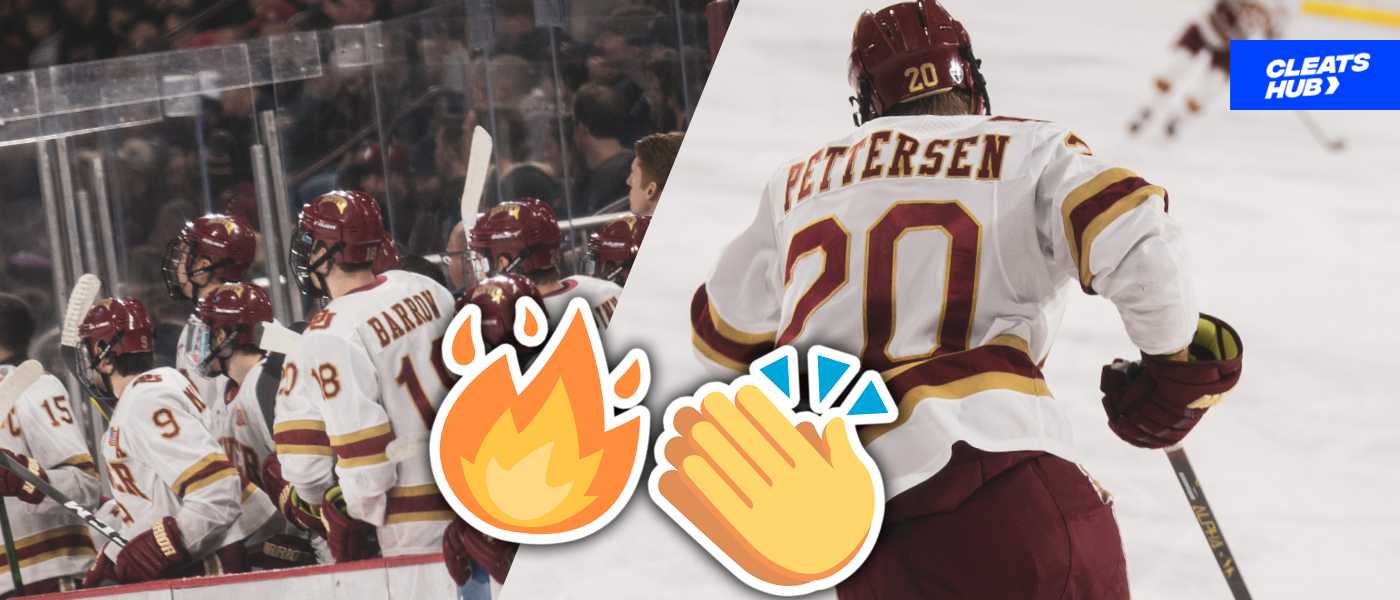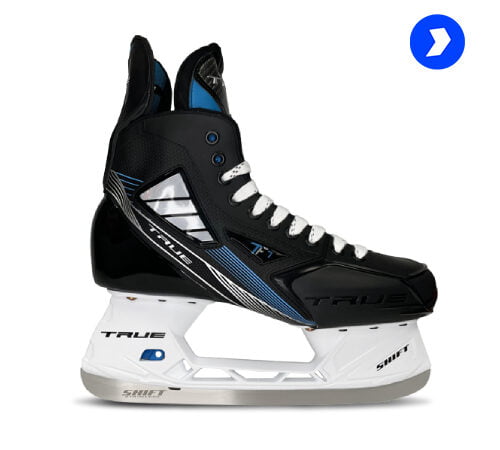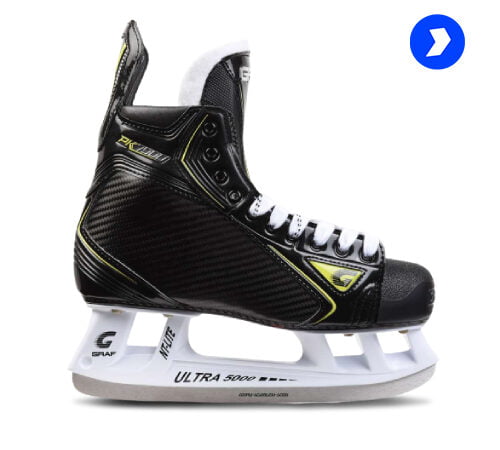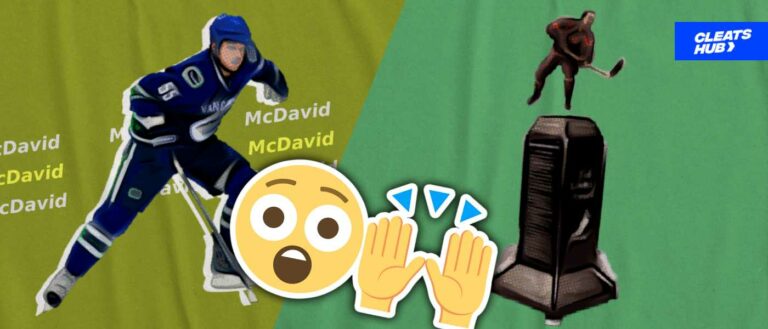What Is Line Change & How Does It Work In The NHL?
Have you ever been to an ice hockey game and noticed that players get on and off the ice very often especially in groups of twos or threes? This method of substitution is a line change in ice hockey.
Line changes occur very often in a game with each team having as much as 120 line changes per 60-minute regulation time. But what are line changes in ice hockey? To understand this, we must first understand what a line is in ice hockey.
What Is A Hockey Line?

A line in ice hockey comprises players playing relatively the same position on the ice and that play at the same time and for a period length. There are two types of lines in ice hockey:
- The defensive line which comprises the left and right defensemen
- And the forward line which comprises the left winger, center, and right winger
Now that you understand what a line is, a line change is the substitution of a line of players in ice hockey unto the bench as another line comes on to take their place. Line changes occur continuously in ice hockey.
The total time a player or line uses on the ice before he moves over to the bench for another line to take over is a shift.
There is no limit to the number of line changes that can occur in a game. Neither are there limits to how long a line change must take. However, each shift in ice hockey takes about 45 seconds. The 45 seconds mark is a guideline that every line of players follows when going onto the ice.
When Does Line Change Occur?
Line change occurs instantaneously in ice hockey. There is no fixed time or moment when line change can occur. It ensues as a game flows naturally. When a line change occurs without a stoppage in play it is “changing on the fly”.
But not all line changes occur when a game is ongoing. Some changes occur during game stoppages like after the referee blows the whistle for a penalty, game misconduct or to call for a faceoff.
Changing On The Fly
The game of ice hockey unlike other sports does not wait or pause whenever a shift wants to occur. Changing on the fly is a term to describe a situation when shifts occur while a game is ongoing without any break or stoppage.
After a line of players has spent their time on the ice (usually about 30-50 seconds), they move to the bench where they are replaced by another line of players.
Changing on the fly does not just happen as it needs to be calculated if not could be detrimental to the team performing the line change. This is because if a bad line change occurs, the opposing team can get the advantage of a goal due to fewer players or bad timing.
Whenever the defense or forward line wants to change they have to ensure that the puck is away from their defense zone and out of the neutral zone. This gives them enough time and space to skate over to the bench and have a substitution.
Also, at the same time, the next line must be ready to board the ice for their shift. They must trail the incoming line on the ice so that they can identify when they are proceeding toward the bench. Clear communication is key in this instance. The outgoing line can gesture or call out the replacement line when he is ready to end his shift.
Once an outgoing line is about 5ft away from the bench, a new line is allowed to board the ice. However, both lines of players can’t touch the puck until the outgoing line is completely off the ice.
How Do Line Changes Occur During Game Stoppage?
If substitution should occur during a stoppage in play, the process is different. After a whistle, teams can make line changes, however, the AWAY team will make a line change first before the HOME team.
Before a line change occurs during a game stoppage, the linesman must moves to the center of the rink and riser his hand up for five seconds. During this time, the AWAY team must perform their line change before he drops his hand.
After this, the HOME team gets eight seconds to perform their line change.
The purpose of allowing the AWAY team to conduct a line change first is beneficial to the HOME team as they get the opportunity to organize a suitable line to match that of the opposing team.
Who Decides Line Change Order?
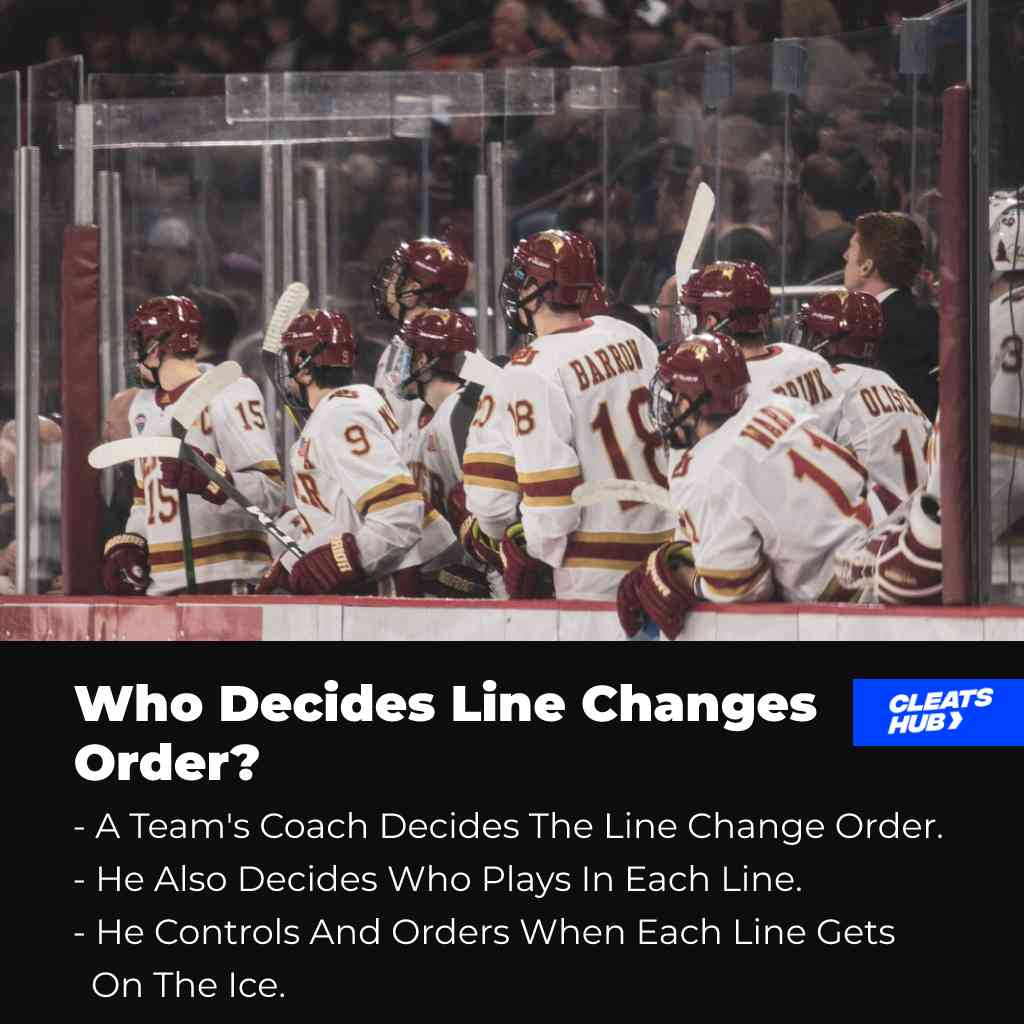
Team coaches control the order in which line change will occur and also the players that will be in each line change. They do this before the start of the game but coaches can also change the players in a line if they perceive a certain player is underperforming.
Coaches also indicate to players when their shifts are over so they can substitute with another line of players. The coach also controls and orders the shifts that replace each other on the ice based on analysis, the nature of the game, and the line that will match that of the opposing team.
Can A Single Player Undergo Substitution In Ice Hockey?
Even though line changes are common, a single player can undergo substitution on the ice. A typical instance is with forwards. A coach can decide to change the left and right wingers in a game and leave the centerman on the ice.
Even this happens only the wingers perform a change in contrast to the entire line of forwards. Also later on in the game, only the centerman can be substituted leaving all other players on the ice.
Part of a line can undergo substitutions one at a time so that the effect of all three or two players on an offensive or defensive line would not affect the game.
It is perfectly legal for this to happen in a game. However, the reason why line changes are preferable is that they tend to be more organized than individual changes.
Why Do Some Lines In Ice Hockey Have NickNames?

There are ways of identifying or calling up a line in ice hockey. You can do this by calling the line number, nickname, or name of the center player. When calling their line number, it can go something like; “Lines 1, 2 ,3, or 4:”.
When it comes to nicknames given to lines in ice hockey, it is a slang or came code used to classify a certain line of players. Not every line has a nickname but there are some very effective lines put together by a team’s coach that earned a nickname.
Some of them include:
- The Century Line
Syl Apps Jr, Lowell MacDonald, Jean Pronovost (Pittsburgh Penguins) - The Mafia Line
Phil Esposito, Don Maloney, Don Murdoch (New York Rangers) - The Production Line
Sid Abel, Gordie Howe, Ted Lindsay (Detroit Red Wings) - The French Connection
Rene Robert, Richard Martins, and Gilbert Perreault (Buffalo Sabres) - Legend Of Doom
Eric Lindros, John LeClair, and Mikael Renberg - The Perfection Line
Patrice Bergeron, Brad Marchand, David Pastrnak (Boston Bruins)
Effect Of A Bad Line Change On A Team
As said earlier, during a line change, it is important that both the incoming and outgoing lines are in sync with each other’s position and situation of the game.
A bad line change, especially when done at the wrong moment (like when the opposing team is attacking) could leave a gap in the team. This is because the incoming line can’t touch or play the puck in any way until the outgoing line is completely off the ice.
Other examples of bad line change are when multiple players or a line of players come out as substitutions for an outgoing line. This leads to confusion and rowdiness on the ice and can result in a penalty.
One method that teams use to settle the confusion of who is replacing who is for the line changes is to shout out who they are replacing so that everyone on the bench knows who is going up next.
Reason For Line Change In Ice Hockey

Ice hockey is a game that requires players to expend high amounts of energy very fast doing activities such as sprinting, bodychecking, and shooting. This is because the game is very fast and players tend to wear out in less than a minute after boarding the ice.
Therefore, shifts in ice hockey are a way for there to be a continuous activeness and steady tempo of the game. It allows for new players to come on the ice so that the existing players do not get fully exhausted when about to shoot the puck to the net or after skating toward the offense.
Also, players who are low on energy are more likely to make mistakes when they play. Therefore, allowing them to rest calms their mind letting them think better.
The constant and simultaneous changes keep the game intensity constant. One line of players gets the opportunity to rest and regain their energy before climbing the ice for another 40-45 seconds of vigorous play.
Rules Associated With Line Change In Ice Hockey
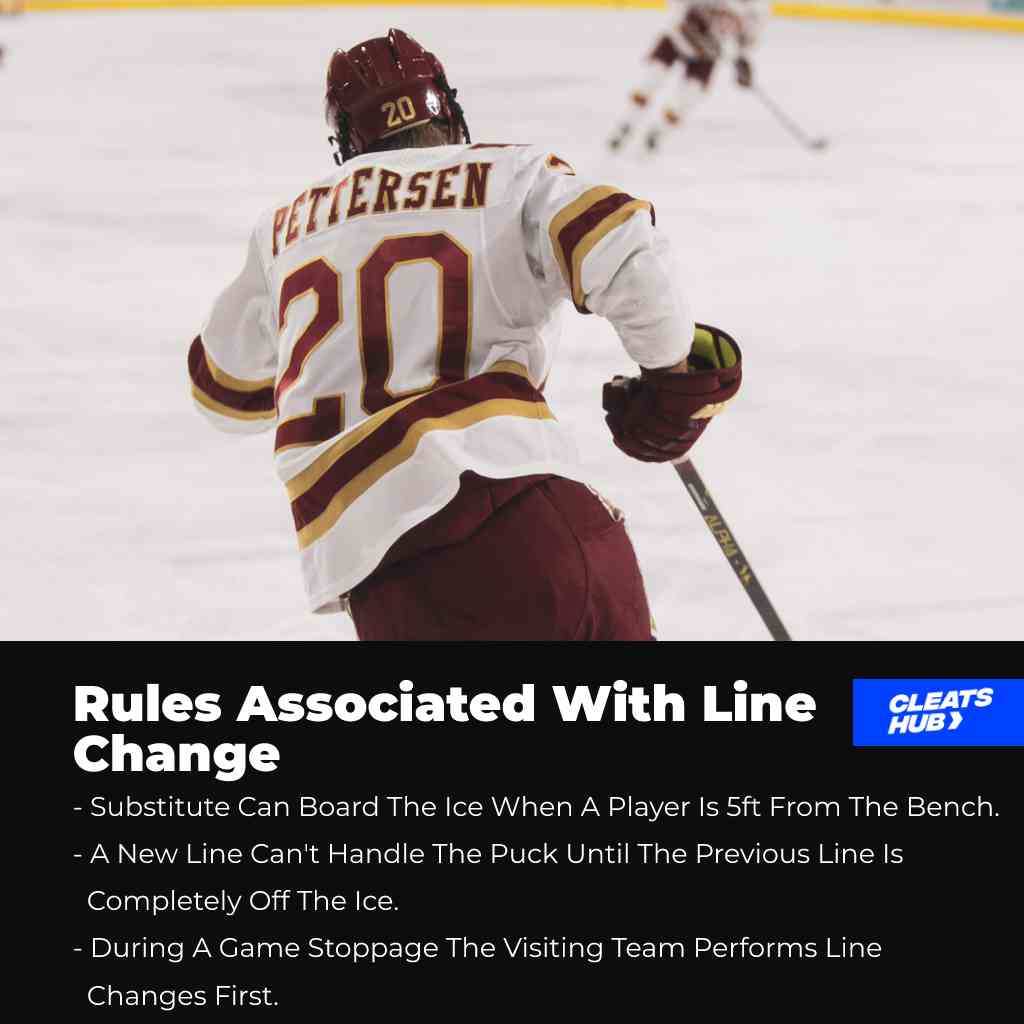
There are a number of rules associated with line change in ice hockey.
For starters, a substitute is not allowed to board the ice until the outgoing line change is at least 5ft from the bench. If the distance is more, the team will then be charged with a “too many players penalty” which is a minor penalty.
Also, when icing is called against a team, the team that commits the icing violations is unable to perform a line change for that stoppage in play.
Finally, performing line change during a stoppage has rules/procedures. These procedures were made on June 20, 2002, by the NHL and have been used ever since. The procedure sees that if a line change should occur during a stoppage in play:
- The AWAY team (visiting team) has five seconds to perform their change
- The HOME team will perform their line change after the visiting team. In addition, eight seconds is the time to perform their line change
- After the line change is complete, the referee will blow his whistle and drop the puck are the specified playoff spot
- This process will not take effect two minutes to the end of a third period in regulation time or during overtime
Conclusion
The only player that does not have shifts or line change in ice hockey is the goalie. The only two times a team removes a goalie from the ice are when he has an injury or during substitution. In this case, the backup goalie takes his place for the remaining length of the game
The other case is when a team pulls a goalie giving them a 6-skater man advantage. This happens mostly a few minutes to the end of a period and the goalie can come back up at the start of the next period.
So I hope you understand all there is to know about line change in ice hockey. Thanks for reading.
Psstt…. The Top Performing Cleats

